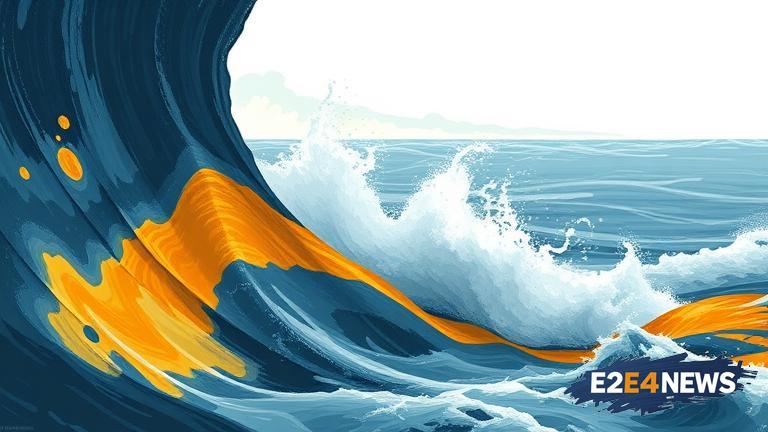A tsunami warning was issued for the US West Coast, causing widespread concern among residents and visitors. However, the actual effects of the tsunami were minimal, with no reported damage or injuries. This has led some to question the accuracy of the forecast, but experts say that the lack of significant effects does not necessarily mean the forecast was wrong. In fact, the forecast was based on a complex system of oceanographic and seismic data, which suggested a potential tsunami threat. The National Weather Service’s (NWS) Pacific Tsunami Warning Center (PTWC) uses a combination of seismic data, ocean buoys, and coastal sensors to detect and predict tsunami activity. When a tsunami is detected, the PTWC issues a warning to affected areas, which in this case included the US West Coast. The warning was issued as a precautionary measure, as the potential impact of a tsunami can be devastating. While the actual effects of the tsunami were minimal, the forecast was still accurate in terms of predicting the potential threat. The NWS and PTWC use a variety of models and data sources to predict tsunami activity, including the Deep-ocean Assessment and Reporting of Tsunamis (DART) system. This system uses a network of ocean buoys to detect changes in ocean pressure, which can indicate the presence of a tsunami. The buoys are equipped with sensors that can detect even small changes in ocean pressure, allowing for early detection and warning of potential tsunamis. In addition to the DART system, the PTWC also uses seismic data from the US Geological Survey (USGS) to detect and predict tsunami activity. The USGS monitors seismic activity around the world, including earthquakes and volcanic eruptions, which can trigger tsunamis. By combining seismic data with oceanographic data, the PTWC can provide accurate and timely warnings of potential tsunamis. The recent tsunami warning was issued after a magnitude 8.2 earthquake struck the Pacific Ocean, triggering a potential tsunami threat. The PTWC quickly issued a warning, which was disseminated to affected areas through a variety of channels, including emergency alert systems and social media. While the actual effects of the tsunami were minimal, the warning was still necessary to ensure public safety. The NWS and PTWC take a precautionary approach to tsunami forecasting, erring on the side of caution to protect lives and property. This approach may sometimes result in warnings being issued for events that ultimately have minimal effects, but it is a necessary step to ensure public safety. In the case of the recent tsunami warning, the forecast was accurate in terms of predicting the potential threat, and the warning was issued as a precautionary measure. The NWS and PTWC will continue to monitor tsunami activity and provide accurate and timely warnings to affected areas. The public is encouraged to stay informed and follow evacuation instructions in the event of a tsunami warning. By working together, we can minimize the risks associated with tsunamis and keep our communities safe. The science behind tsunami forecasting is complex and constantly evolving, with new technologies and models being developed to improve prediction accuracy. The NWS and PTWC are at the forefront of this research, working to improve our understanding of tsunami activity and provide more accurate and timely warnings. As our understanding of tsunami science improves, so too will our ability to predict and prepare for these events. In the meantime, it is essential to remain vigilant and take precautions to ensure public safety. The recent tsunami warning serves as a reminder of the importance of being prepared and staying informed about potential tsunami threats. By taking a proactive approach to tsunami forecasting and warning, we can minimize the risks associated with these events and keep our communities safe.
